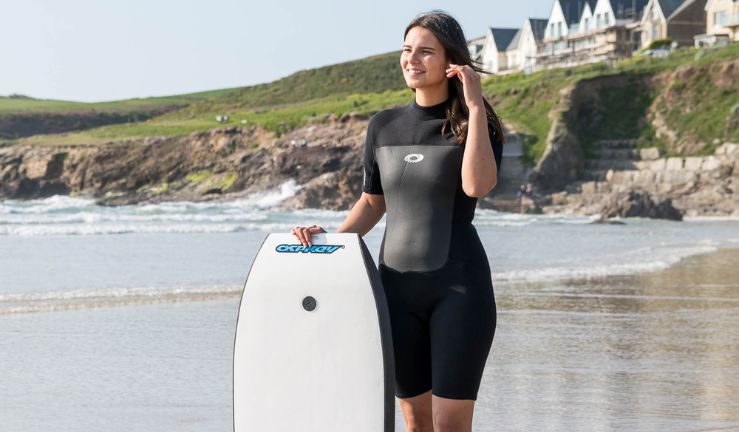

BODYBOARD GUIDE
Whether you are new to bodyboarding or have been doing it for years, our Bodyboard Quick Start Guide, will help get you or your child finding the right board. Take a look at our handy guide below!
1. What Type Of Bodyboards are There?
Choosing the right tail shape for your bodyboard is essential as it the shape of tail has drastically different performance when it comes to movement in the water. There are two common tail shapes for bodyboard:
BAT TAIL
Bat tail boards function better than crescent tails in weaker surf or if the waves are acting unpredictably. If you’re a slightly heavier rider then the bat tail gives you a little extra flotation at the rear of the board. The downside of this is it feels a little looser on the wave, but is better for prone riders and performing manoeuvres with.
CRESCENT TAIL
Crescent tail designs are great for holding the wave well and are good user friendly boards; they are also great for drop knee riders. The shape allows you to position your body so that your hips are on the back of the board, perfect for catching a wave.
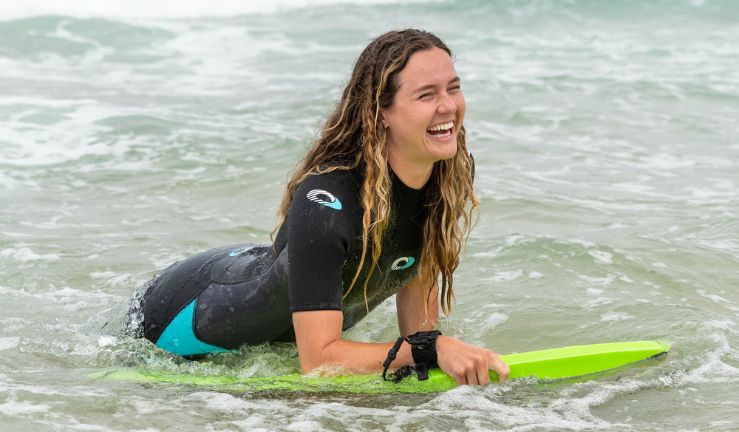

2. What Bodyboards are Best for Beginners and Kids?
A bodyboard that is right for you or perhaps your child is essential in order to get the maximum enjoyment out of the sport. So whether you are wanting to get a board sorted for your next holiday to the coast or want a board that will see you through the first phase of your entry to a new sport, see what factors you need to prioritise when considering your next board.
SIZE
Choosing your first board as a beginner can seem like a tricky process, but the number one thing to consider before style is the size of your board. A size that is not appropriate will not allow you to get the most of your board and could leave you disappointed with your first outing on the waves with your new gear. Check out our sizing guide section for more information on how to get fitted up.
CHARACTERISTICS
In terms of the characteristics of a beginner boards it is important that you choose aboard that behaves as you need it to. Buying a really expensive board can be a waste of time as you will not be able to capitalise on its fine-tuned characteristics.
CORE
We recommend you choose a board with an EPS core. An EPS core will provide just enough flex as well as great buoyancy and strength. Its cushioning extruded polyester foam will also help cushion your elbows and hips, two areas which can become irritated for first time bodyboarders. The EPS core also has great water resistance properties. This is great if you damage your board when you transport it to the beach. As a beginner you are likely to want to invest in a bodyboard bag from the off, so a board that can stand up to some bashes is a great choice!
THE SLICK
HDPE decks are best for beginner riders due to their durability and low-resistance which means that they maximise speed even on smaller slower waves.
THE DECK
An XPE or IXPE deck delivers great water-resistance and has high rigidity which makes it a very durable deck.
THE TAIL
In terms of tail shape, Crescent or Bat Tail designs are both user friendly designs. A Crescent Tail however makes it easier for you to position your hips on the back of the board to catch waves. They’re also comfortable while you paddle out behind waves. A Bat tail will however better in weaker surf or unpredictable waves and will provide extra flotation for a heavier rider.
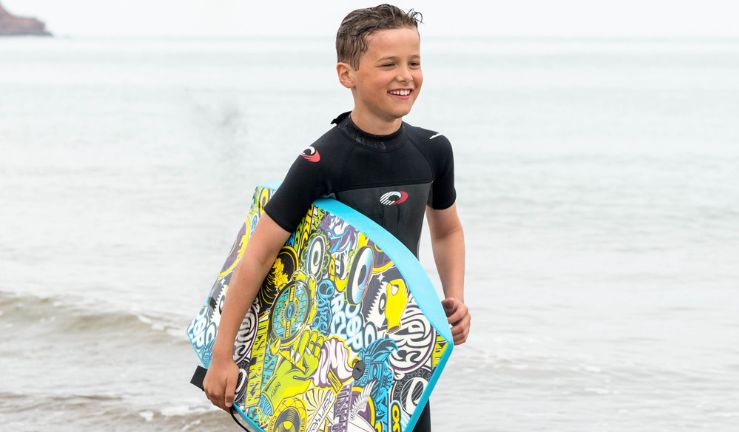

4. What Bodyboards Are Best For Intermediate/Advanced Riders?
If you’ve already got a number of bodyboarding riding hours under your belt, you’re probably thinking about how you can take things to the next level. Assuming that you’ve already nailed your bodyboard sizing, you need to think about a number of factors when choosing your next board.
THE CORE
The core you choose will now depend very much on the preference you have developed. PE and PP cores are often chosen by advanced riders as they provide the ability to carry out more technical manoeuvres.
THE SLICK
Often more advanced riders will choose a Surlyn Slick over a HDPE deck. A Surlyn deck will provide the rider with superior responsiveness and flexibility due to its ability to contort its shape whilst being able to return to its original shape once rider pressure has been removed.
THE DECK
We recommend a PE deck as they provide great flexibility for those looking to perform agile turns on the waves.
THE TAIL
Both tails are suitable for more advanced riders, each providing unique characteristics.
Crescent Tail: A Crescent Tail provides great bite enabling you to engage the rail edge more easily whilst you’re riding the face of the wave. The Tail Peg (AKA the back corner of the board) also allows you to track or trim across a wave. The Crescent tail is therefore suited perfectly for bigger waves.
Bat Tail: Designed for heavier riders or riding smaller waves, a Bat tail board is great summer option for British shores due to the smaller, weaker waves. It's shape provides more speed and manoeuvrability which generally provides a smoother ride. However in the bigger waves a bat tailed board is likely to become a little twitchy.
RIDER STYLE
Drop knee riders should select a Crescent tail board whereas prone riders can be suited to both Crescent and Bat tailed boards.
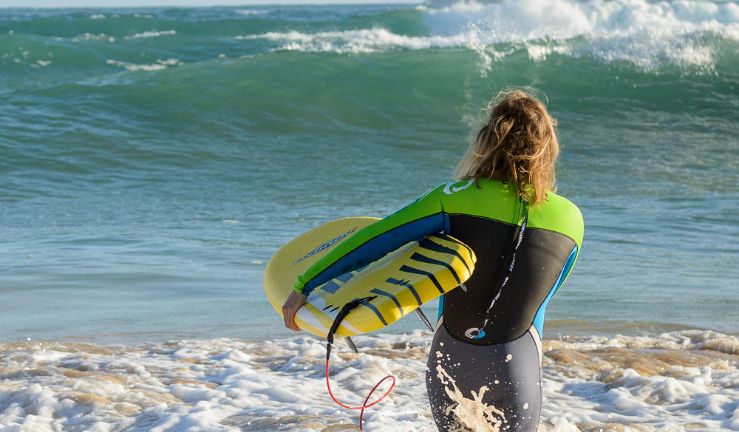

5. What Size Bodyboard Should I Get?
A bodyboard that doesn’t fit you is much like a boat without a rudder – useless. Too long and the board will be difficult to control and you won’t be able to paddle effectively as it will interfere with your legs. Too short and the board will create drag making it very difficult to catch and stay on the wave. Weight should also be a consideration as this affects not just the size of the board but perhaps also the materials used (E.g. a more buoyant core material). However it should be stated that what works for one rider might not work for another!
Two quick methods to choose what bodyboard is the right size for you:
Method 1: Choose a bodyboard that is as tall as your bellybutton when stood upright on the ground.
Method 2: When the bodyboard is held out in front of you it should reach from your knees to your chin.
FURTHER CONSIDERATIONS WHEN CHOOSING YOUR BODYBOARD SIZE
Type of Wave: For the more advanced riders what size bodyboard you choose will also depend on the size of the waves you’re likely to be riding.
Large Wave Rider: If you’re going to be riding big waves primarily, you should choose a shorter bodyboard. A smaller bodyboard will give you more control and agility as more of your body is in the water.
Small Wave Rider: If the surf you’re going to be riding are small waves, a longer board will give you more buoyancy and stability in the water.
Type of Riding: If you are feeling a little more adventurous than the classic prone riding position, dropknee and standup riders should select a longer board, although this is completely up to the rider!
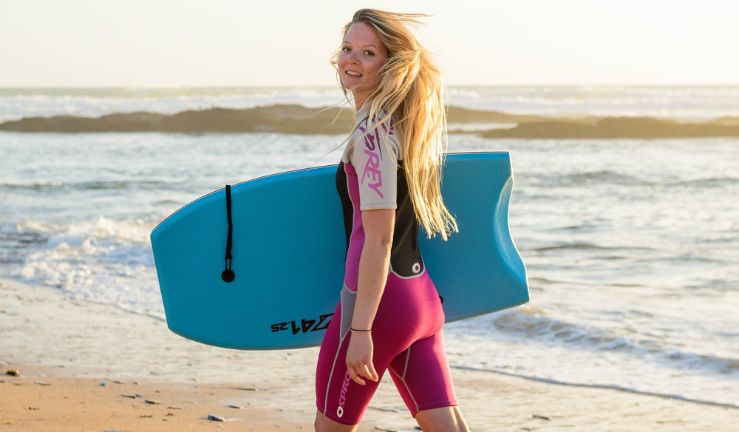

6. What Accessories Are Available For A Bodyboard?
There are numerous accessories that you can buy to customise your board, improve safety, protect your board and increase your performance when you are out on the waves. Take a look at the range of accessories available for bodyboards and find out how they can help you.
LEASH
A leash is a material coil that attaches between the board and the wrist or bicep of the rider.
Why use a bodyboard leash?
A leash prevents you from losing your board and also might save you from drowning. The sea is an unpredictable place and that’s why we recommend you always wear your leash. Coming off your board you won’t have to worry about losing your board but more importantly it will leave you save in the knowledge that a ready-made flotation device is in arms reach should you get into trouble. All our bodyboards, come with a leash already attached but they’re also widely available to buy separately.
What makes up a a good leash?
The Plug
The string
The cord
The connectors
The wrist or bicep cuff
BODYBOARD BAG
Getting a bag for your bodyboard isn’t essential but it will go a long way to making your life easier! Making your board easy to transport to and from the beach, carrying your board won’t feel like a chore. A board bag will also keep your gear in much better condition and avoid any damage to your board surface or slick which could cause the core to flood!
WAX
Although wax isn’t a necessity, it does provide great grip if you have problems with sliding off your board. If however you are a more advanced bodyboard rider, you need to wax your board strategically as it may impede your movement or shifting of weight on the board.
SWIM FINS
An advanced rider is likely to add swim fins to their arsenal when taking to the waves. A great way to propel you onto the wave early, they also help you get out onto the surf quicker whilst using less energy.
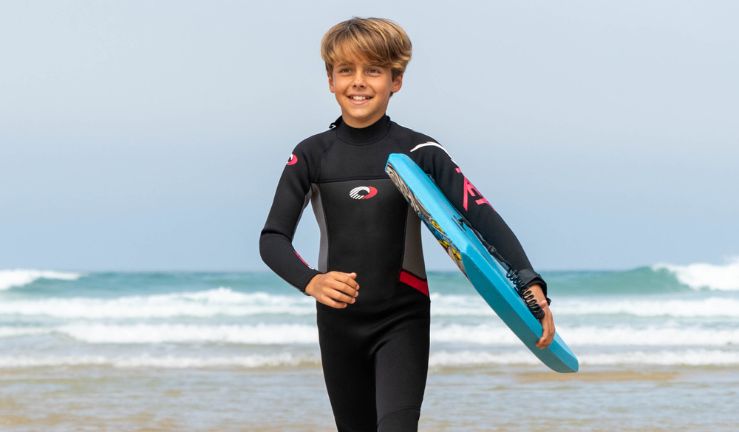

7. What Makes Up A Bodyboard?
There are a variety of different materials that make up a bodyboard right from the slicks to its core.
THE CORE
There are three main types of core for a Bodyboard:
EPS – The core is made up of an extruded polystyrene foam which offers unique flex patterns, great buoyancy strength as well as good layer of cushioning for elbows and hips. Some models even feature a thick 55mm core for added strength. Its water resistant properties also help to reduce the likelihood of the board becoming waterlogged if the deck is damaged. They are also often cheaper and lighter than other bodyboard cores, making it great for those just starting out.
PE – This Polythylene core is considered as the original core as it was the core of choice for the first bodyboards. The core provides flex that delivers instant feedback to the rider, great for acting in a split second to the conditions. The flexibility makes it great for handling larger waves and advanced bodyboarding. PE performs better in cooler water as warmer water conditions can cause the core to soften too much, reducing the performance of the bodyboard.
PP – Polypropylene or Polypro provides fantastic all-round performance, making it the choice for many professional bodyboard riders. Its properties make it lightweight and strong, perfect for those tackling the biggest of waves or performing the most technical of manoeuvres. Many PP cores are now completely closed cell. These cores are known as Beaded PP and provide great flex and buoyancy for sitting high in the water. The other type, Extruded PP, offer rigidity and speed but do not have a completely water-tight core.
THE SLICKS (AKA SKINS)
The slick is the underneath of the board which is in direct contact with the water when riding waves. There are two main types of slick which make up the vast majority of today’s bodyboards.
HDPE Slicks – HDPE or high density polyethylene slicks offers a smooth trajectory and enhances speed for the rider due to its low-resistant nature. Affordable, yet hard-wearing, this slick is a great choice for those looking to get started
.
Surlyn Slicks – A rubber like surface, using similar materials to that of a golf ball, Surlyn slicks are the more expensive slick alternative is made to give the rider optimum responsiveness and flexibility. When pressure is applied by the rider, this slick is able to contort its shape whilst always returning to its original shape. These features make it the choice for many of the world’s top bodyboarders looking to generate top speeds and generate superior projection through waves.
THE DECK
The deck or the top deck is the part where you lie on the bodyboard when surfing a wave. Each different bodyboard deck materials provides their own benefits.
PE Deck – Soft and flexible they provide great padding for the rider, but after lots of use may see elbow indentations remain as they fail to return to their original shape.
XPE Deck – Closed structure, XPE provides great water-resistance. These decks are usually stiffer and is likely to require more wax to improve traction.
IXPE Deck - This higher-density cross linked Polyethylene provides extra rigidity and great strength.
BODYBOARD CHANNELS
Many ask the question ‘what are bodyboard channels?’ Channels are grooves that continue upwards from the tail on the slick side of the board that help grip the wave, and aid with controlling the board once on the wave. Performing much the same function as a fin on a surfboard, the channels let you control the direction of the board. It’s worth noting that bat tail boards with channels are far more manoeuvrable than crescent tails, making it easier to turn and pull off tricks.
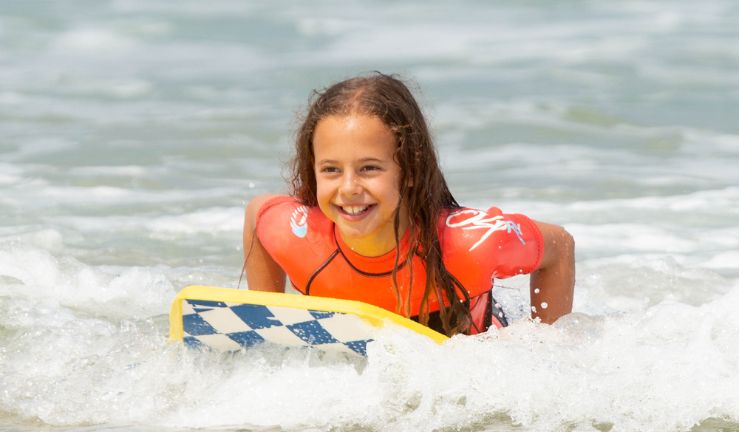

8. How To Look After Your Bodyboard
Taking care of your bodyboard is essential to make sure it performs its best and lasts for a long time. From storage to looking after your bodyboard on the beach, take a look at our top tips for maintaining your bodyboard.
KEEP OUT OF THE HEAT
Keeping your bodyboard out of the heat is very important. Leaving your board in direct sunlight will cause it to lose its concave shape as well as make the surface bubble. Try and choose a bodyboard with a white bottom and avoid a black deck as this will attract heat and expand the board.
Salt and sun is the worst possible combination for the bodyboard. It is therefore recommended that you keep your board in a bag or cover it with a wet towel if you are resting on the beach.
Do not leave your board in a hot car. This can heat up the board and cause the core to emit a gas which will eventually bubble the deck or the slick
DON’T TREAT YOUR BODYBOARD AS A SKIMBOARD!
Running and jumping on a bodyboard can cause irreplaceable damage to the core, dramatically reducing the performance of the board.
LEARN TO DUCK DIVE WHEN IN THE WATER
By pushing the board under the surface of an oncoming wave it will prevent your board taking the full impact of the wave. A wave-impact can cause damage to the core and push you over!
WASH YOUR BODYBOARD
Removing salt water with freshwater will remove salt which can damage your board.
STORE YOUR BODYBOARD
Place it somewhere as flat as possible and without anything heavy on top. This will remove the likelihood of your board losing its shape and damaging its core.
MAKE REPAIRS QUICKLY
Piercing the deck or slick could result in your board’s core filling with water. Get it patched up as quickly as possible to prevent this from happening.
